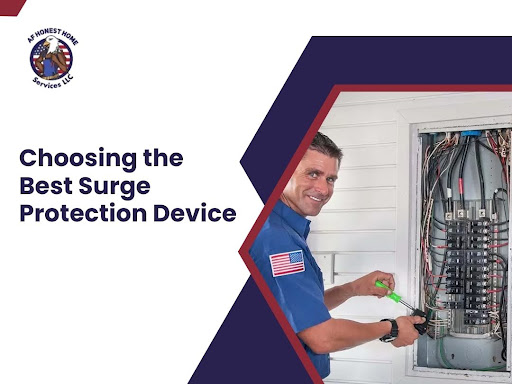Understanding the Threat of Electrical Surges
Imagine coming home after a long day at work, only to find your electronics friend and your appliances malfunctioning—all because of a sudden electrical surge. This scenario is all too familiar to many homeowners who underestimate the importance of surge protection.
In this comprehensive guide, we delve into why whole-house surge protection matters. We’ll explore how these systems work, the benefits they offer, the different types available, and crucially, why investing in whole house surge protection installation is a smart choice for protecting your home’s electrical infrastructure.
What Causes Power Surges?
Power surges are sudden and brief spikes in electrical voltage that can occur within the electrical system of a home or building. These surges can originate from various sources, both external and internal, and understanding their causes is crucial for implementing effective surge protection measures. Here are the primary causes of power surges:
Lightning Strikes: Direct strikes or nearby lightning can induce massive electrical surges through power lines.
Utility Grid Switching: Operations like switching power sources or managing electricity demand can cause brief but potent surges.
Downed Power Lines: Accidents, storms, or falling objects can cause power lines to touch, creating surges as electricity flow is disrupted and restored.
Electrical Devices Cycling: Appliances with motors (like refrigerators or air conditioners) cycling on and off can create internal surges.
Faulty Wiring: Old, damaged wiring or poor electrical infrastructure can lead to fluctuations in voltage.
Power Outages: When power returns after an outage, the initial surge of electricity can cause a surge.
Construction or Industrial Activities: Nearby activities can introduce electrical disturbances into the grid.
Faulty Electrical Equipment: Malfunctioning components within the home’s electrical system, such as circuit breakers or transformers, can cause irregular voltage supply.
Why Whole House Surge Protection Matters
Comprehensive Protection
Whole house surge protection goes beyond the capabilities of individual surge protectors plugged into outlets. Instead of protecting just one or two devices, it shields your entire home—including appliances, HVAC systems, and sensitive electronics—from voltage spikes that can cause irreparable damage.
Defense Against Various Surge Causes
It protects against a range of surge causes such as lightning strikes, utility grid switching, downed power lines, and internal surges from appliances cycling on and off. These surges can originate from external sources or within the home, posing risks to sensitive electronics.
Cost Savings
The financial impact of electrical surges can be substantial. Repairing or replacing damaged electronics, appliances, and wiring can run into the thousands of dollars. Whole house surge protection acts as a preventive measure, reducing the risk of such costly repairs and replacements.
Reliability During Storms and Outages
During severe weather conditions or power outages, the risk of electrical surges often increases. Whole house surge protection helps mitigate this risk, ensuring your home remains protected even during adverse conditions.
Preservation of Electronics
Sensitive electronics are particularly vulnerable to voltage fluctuations. Whole house surge protection ensures these devices receive a steady and safe voltage supply, extending their lifespan and improving their reliability.
Safety and Reliability
Electrical surges not only damage electronics but can also compromise the safety and reliability of your home’s electrical system. By installing surge protection devices, you ensure that your electrical infrastructure remains robust and dependable, minimizing the risk of fire hazards and electrical failures.
How Whole House Surge Protection Works
Whole house surge protection systems operate by intercepting excess voltage before it reaches your home’s internal wiring and devices. These systems typically consist of surge protective devices (SPDs) installed at critical points in your electrical setup:
Type 1 Surge Protectors: Installed at the main electrical panel or meter, Type 1 surge protectors are designed to handle large surges, such as those caused by direct lightning strikes. They provide the first line of defense against external electrical disturbances.
Type 2 Surge Protectors: Also known as main panel surge protectors, Type 2 devices are installed at the main electrical panel alongside circuit breakers. They protect against both external surges (like lightning) and internal surges (from appliances and utility grid fluctuations).
Type 3 Surge Protectors: These are point-of-use or secondary surge protectors installed at specific outlets or near sensitive equipment within the home. They provide additional protection for individual devices, such as computers, TVs, and entertainment systems.
Choosing the Best Surge Protection Device
Choosing the best surge protection device involves several critical considerations to ensure your electronics and appliances are effectively protected from electrical surges. Here’s a step-by-step guide on how to select the right surge protection device for your home:
1. Assess Your Needs
- Evaluate Your Electrical System: Understand the capacity of your electrical panel and the total number of circuits in your home. This helps determine the type and number of surge protectors needed.
- Identify Vulnerable Equipment: Determine which expensive appliances and equipment need surge protection. These may include computers, TVs, home theater systems, kitchen appliances, HVAC systems, and more.
2. Types of Surge Protection Devices
- Type 1 Surge Protectors: Installed at the main service panel or meter, Type 1 Surge protectors are designed to handle large surges, such as those caused by lightning strikes. They provide the highest level of protection against external surges.
- Type 2 Surge Protectors: Installed at the main electrical panel, Type 2 Surge protectors safeguard against both external surges (like lightning) and internal surges (from appliances and utility grid fluctuations). They offer comprehensive protection for your entire home.
- Type 3 Surge Protectors: Also known as point-of-use surge protectors, Type 3 devices are installed at specific outlets or near sensitive equipment. They provide localized protection for individual devices and are often used in conjunction with Type 1 or Type 2 surge protectors for layered protection.
3. Key Features to Consider
- Clamping Voltage: Look for surge protectors with lower clamping voltages (measured in volts), as they activate faster and divert excess voltage away from your electronics more effectively.
- Joule Rating: This shows how much energy the surge protector can hold before needing to be replaced. Greater protection against stronger surges is provided by higher joule ratings.
- Response Time: A faster response time (measured in nanoseconds) indicates how quickly the surge protector reacts to a surge. Opt for devices with quick response times to minimize potential damage to connected equipment.
- Number of Outlets: Make sure there are enough outlets on the surge protector for all of your gadgets. Consider future needs when selecting a surge protector with multiple outlets.
- Indicator Lights and Audible Alarms: Surge protectors with indicator lights provide visual confirmation of protection status and grounding, while audible alarms can alert you to potential issues with the surge protector.
4. Quality and Brand Reputation
- Choose Trusted Brands: Select surge protectors from reputable manufacturers known for producing high-quality and reliable products. Research customer reviews and ratings to gauge the performance and durability of the surge protection device.
- Certifications: Look for surge protectors that comply with safety standards and certifications such as UL (Underwriters Laboratories) listings or IEEE (Institute of Electrical and Electronics Engineers) standards. These certifications ensure the device has undergone rigorous testing for safety and performance.
5. Installation and Maintenance
- Professional Installation: The whole house surge protection installation, especially Type 1 and Type 2, typically requires professional installation by a licensed electrician. Ensure the surge protector is installed correctly to maximize its effectiveness.
- Regular Testing and Maintenance: Periodically test your surge protection devices to verify they are operating correctly. Replace surge protectors if they show signs of wear or damage, or if they no longer provide adequate protection.
6. Budget Considerations
- Balance Cost and Features: While cost is a factor, prioritize quality and effectiveness when choosing a surge protection device. Investing in a reliable surge protector can potentially save you money by protecting expensive electronics from damage caused by surges.
7. Warranty Coverage
- Check Warranty Details: Review the manufacturer’s warranty for the surge protector. A longer warranty period indicates confidence in the product’s durability and performance. Ensure you understand the terms and conditions of the warranty, including what is covered and for how long.
Conclusion
Investing in whole-house surge protection is a proactive step toward safeguarding your home’s electrical system and valuable electronics from the destructive effects of electrical surges. Whether you opt for Type 1, Type 2, Type 3 surge protectors, or a combination thereof, each type plays a crucial role in providing layered protection against both external and internal surges.
Don’t wait until an electrical surge causes irreparable damage. Protect your home, your investments, and your peace of mind by consulting with a licensed electrician to discuss whole house surge protection installation options tailored to your specific needs. With the right surge protection in place, you can enjoy reliable and uninterrupted use of your electronics and appliances for years to come!



